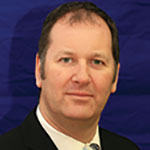This ECA Training Course is directed at staff from Production, Quality Assurance and Quality Control who is responsible for the planning and implementation of environmental monitoring programmes. It is also valuable for decision makers who have to deal with environmental monitoring data within the framework of product release.
Environmental monitoring is one of the systems that decide about the product quality in the manufacture of sterile medicinal products. Both European and American GMP regulations place special focus on this topic.
The USP 1116, the new EU GMP Annex 1 and especially the FDA’s “Guidance for Industry: Sterile Drug Products Produced by Aseptic Processing - Current Good Manufacturing Practice“ deal in detail with environmental monitoring.
However, many of the requirements laid down in these documents seem to be excessive for everyday practice on the one hand and leave great scope for interpretation on the other hand.
In practice, environmental monitoring programmes sometimes develop into time-consuming, cost- and personnel-intensive measures. Therefore, it is the aim of this Training Course to provide the participants with pragmatic recommendations for the creation and implementation of environmental monitoring programmes.
Within the framework of this Live Online Training, the participants are confronted with current hot topics, like:
- Alert / action levels
- Relationship to batch release
- Locations and frequency
- Identification of isolates
- Sampling procedures
and get to know solutions for their own company practice.
Environmental Monitoring
- Why do we do it – what does it tell us?
Relevant Guidelines
- The New EU-GMP Guide Annex 1
- USP <1116>
- FDA Aseptic Processing Guide
- ISO 14644 and ISO 13824
- An overview about the most important guidances
Surface / Personnel Monitoring
- Surface:
- How?
- Surface sampling techniques
- Limitations
- Validation?
- Personnel:
- When and how?
- Results and specifications
- How to deal with shedders/pathogen carriers.
Viable Air Monitoring
- Regulatory Standards
- Settle Plates
- Validation
- Drying Issues
- Where to place them?
- Active Air Sampling
- Equipment options / comparison
- Validation
- Where to place them?
Clean Rooms – RABS – Isolator: Points to Consider in Environmental Monitoring
- Comparison of the technical concepts
- Validation of microbiological media for the isolator
- Selection of sampling points
- Transfer of microbiological media
- Interpretation of the results and handling of excursions
Non-viable (particulate) Air Monitoring
- The grading of areas for manufacture of sterile medicinal products in the EU
- How to claim classification of areas to current standards
- How to ensure continuing compliance with the classification
- Selection of sampling locations for qualification and routine
- Particle monitoring, how and how often
- Handling the data
Workshop: How to Establish an Environmental Monitoring Programme / Use of FMEA to Determine Sample Points in Routine Monitoring
- Identifying weaknesses in contamination control systems
- Identifying locations which will provide “early warning” signals of loss of control
- Preparing useful environmental monitoring SOPs
- Keeping manageable records
Case Study: Trending of Environmental Monitoring Data
- What is a trend?
- How can I use electronic systems to track and trend EM data?
- How to get meaningful information from trending
- Alert and action level setting
- Using trending as tool for pro-active environmental control measures
Microbiological Methods
- Microbiological media, growth requirements
- Identification of isolates
- Validating your methods
- Using rapid identification techniques
- Recovery problems
- Identification to the level of DNA, what value does it bring
Environmental Monitoring for Medical Devices
- Environmental Monitoring requirements considering ISO and AAMI
- Classified Cleanrooms
- Controlled Environment
- Real life example
- What to do when excursions occur?
Environmental Monitoring for Non-Steriles
- Why monitor non-sterile areas
- Risk vs impact
- Overview of regulatory position
- Case study
Deviation Management for Environmental Monitoring
- Steps to be taken in case of excursions
- When is an excursion a deviation?
- Comprehensive root cause analysis
- The nasty “re-occurrence”
- Finding of appropriate actions
Workshop: Interpretation of OOS Results
- What is an OOS in environmental monitoring?
- OOS in relation to trends
- How to investigate
- Follow-up and corrective actions
- Consequences for batch release
Investigations / Documentation
- The information content of “variable” data versus quantitative limits
- Published and practical limits
- The information content of qualitative data
- Communicating with technical management and higher management
Venue
Radisson Blu Scandinavia Hotel
Amager Boulevard 70
2300 Copenhagen S, Denmark
Phone: +45 (0) 33 96 50 00
guest.copenhagen@radissonblu.com
Accommodation
CONCEPT HEIDELBERG has reserved a limited number of rooms in the conference hotel. You will receive a room reservation form/POG when you have registered for the conference. Reservation should be made directly with the hotel. Early reservation is recommended.
Fees (per delegate, plus VAT)
ECA Members € 1,890
APIC Members € 1,990
Non-ECA Members € 2,090
EU GMP Inspectorates € 1,045
The conference fee is payable in advance after receipt of invoice and includes social event on the first day, lunch on both days and all refreshments. VAT is reclaimable..
Presentations/Certificate
The presentations for this event will be available for you to download and print before and after the event. Please note that no printed materials will be handed out on site and that there will not be any opportunity to print the presentations on site. After the event, you will automatically receive your certificate of participation.
Conference language
The official conference language will be English.
Social Event
On the evening of the first course day, the participants are cordially invited to a dinner. This event is an excellent opportunity to share your experiences with colleagues from other companies in a relaxed atmosphere.
Contacts
Questions regarding content:
Mr Clemens Mundo (Operations Director), +49 (0) 6221/84 44 42, mundo@concept-heidelberg.de
Questions regarding organisation:
Ms Isabell Helm (Organisation Manager), +49 (0) 6221/84 44 49, helm@concept-heidelberg.de



